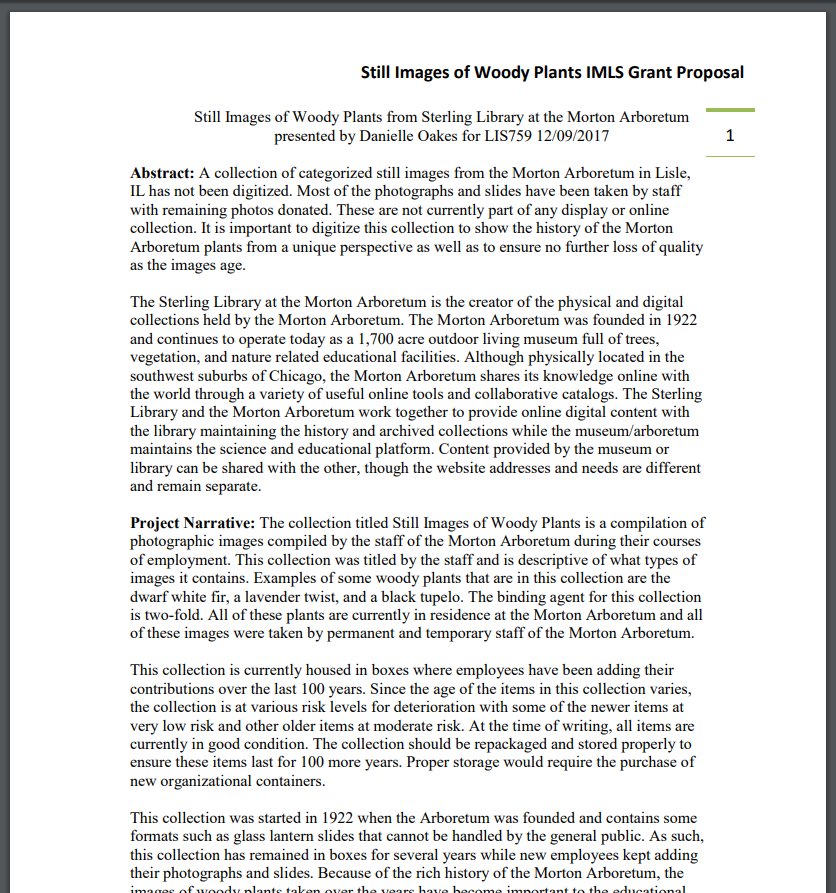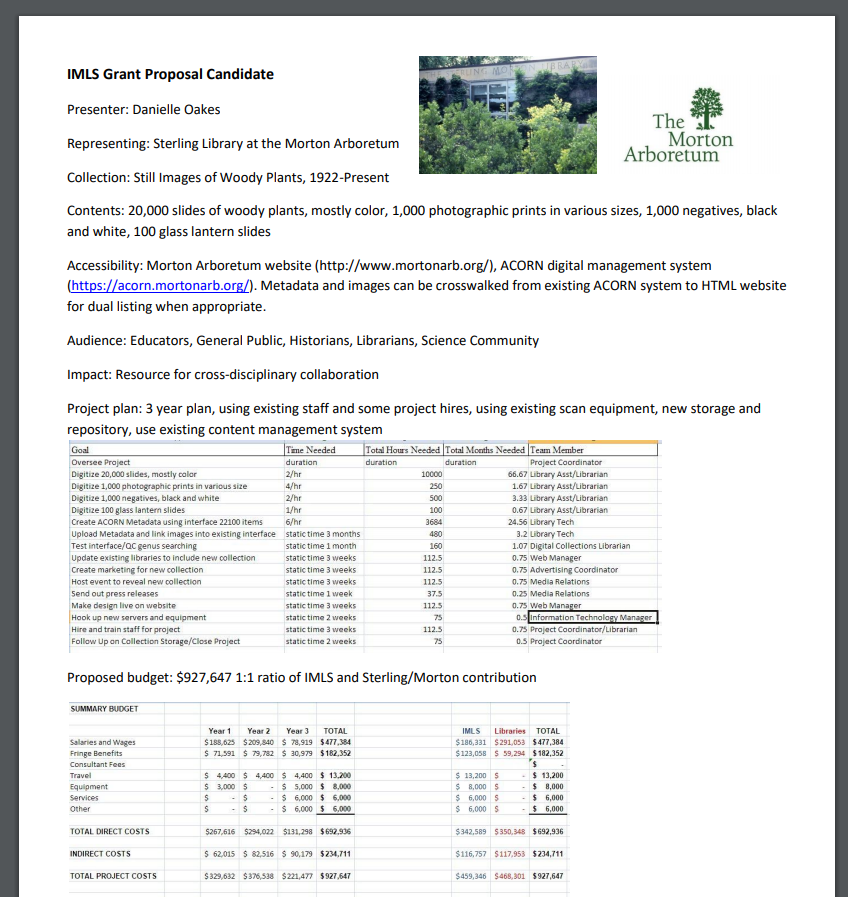Master's of Science, Library and Information Science Curriculum Goals
This is the e-Portfolio of Danielle Oakes in pursuit of a Master's of Science, Library and Information Science at Dominican University.
4.) Synthesize theory and practice within a dynamic and evolving information environment.
- Apply library and information science theories, principles, and research to professional practice.
- Describe how library and information science theories and practices inform and improve emerging technologies.
- Demonstrate teaching and learning principles in relation to professional practice.
4a Apply library and information science theories, principles, and research to professional practice.
This is an IMLS grant proposal written for LIS 759 Digital Libraries taught by Carolyn Caizzi. There are two documents attached, one being the handout from the presentation on the grant proposal and the other being the submitted proposal text. In Digital Libraries, one of the assignments was to take a real collection that is not digitized and write up a grant proposal from beginning to end including materials, staff, budget, time, and housing of the collection. Through this process, I became familiar with all steps of archiving a digital collection, both in theory and practice. Although this collection was not selected for an IMLS grant, I learned a lot through the process of working with the Morton Arboretum staff about what resources they have available for digitizing, time frames, paid and volunteer staff knowledge and capabilities, as well as how to phrase these things on paper to show the needs of the organization. The research involved in an IMLS grant is extensive. First, you have to be familiar with the organization's resources determining if there will be staff, funding, operational costs or equipment available. Then, you become familiar with the collection contents and start asking questions to determine priorities- Will things degrade? Is there a sense of urgency to get this information before it is gone? Next, you start in on the requirements of the grant and determine if this project is a good fit with the goals of the program. Has any organization received funding for similar projects? Is this digitization project worth pursuing as a grant recipient or on a different level? Finally, you have to put together a budget, a paper, and a presentation on why this collection deserves to be funded. Every step of the process requires diligence, both to the organization and to the library science profession, to show how the desired collections needs help to get digitized. In either acceptance or denial, the grant process was useful to me in getting experience with a grant for digitization.
4b Describe how library and information science theories and practices inform and improve emerging technologies.
This is a record and information management plan from LIS 799 Practicum. My practicum took place at the Lincoln Park Zoo office of animal permits and records under the supervision of Adrienne H. This internship was made possible by a partnership with the Chicago Collections Consortium and work on the Urban Ecology project. When I started at the Lincoln Park Zoo for my volunteer internship, the archivist who works there was managing two content systems: a daily updated system of animal records, and an archival system of records with historical or promotional value. Since there was a large quantity of work and no plan to begin on any particular project, I evaluated each part of the project and created a plan for myself and future interns to use the Past Perfect archival software. This plan includes an inventory and sorting of records, the digitization of several types of artifacts, a brief usability study with the public relations team to prioritize which resources they would like first, and a guide to the technical aspects on how each item was and should be consistently digitized. A number of practices learned in school are present in this assignment: records management, archival technique, digital libraries, organization of knowledge, management of library and information centers, Internet fundamentals and design, and social media. All of this knowledge came together to form what I feel is the best plan to get relevant information into a digital system that can be used and distributed. Although having an organized plan as a whole helps to improve the workplace, having a technical user guide for future interns will help the organization be consistent, manage time well, and keep accurate records as technology advances the system and the way the information is handled.
4c Demonstrate teaching and learning principles in relation to professional practice.
This is a sample records and information management (RIM) plan created for LIS 886 Records and Information Management taught by Todd Kleine. This class used real-life examples and scenarios from the Certified Records Managers Exam to prepare the future information professionals in the class for what lies ahead in this career path. This RIM plan project addresses the concerns of fictional River Park University and outlines a one-year plan to create records management policies, manage staff and compliance within these policies, and properly follow the records to the end of their life cycle. This document individually addresses the issues of the fictional scenario, but also addresses records management issues as a whole for an institution that is new to the process. In clear and precise language, recommendations, budgets, and tasks are bound together in a portable document format that mimics one that could be found in any records and information management meeting. This document demonstrates the learned classwork as well as how to properly impart those principles on others.

 Contact info
Contact info Email
Email
